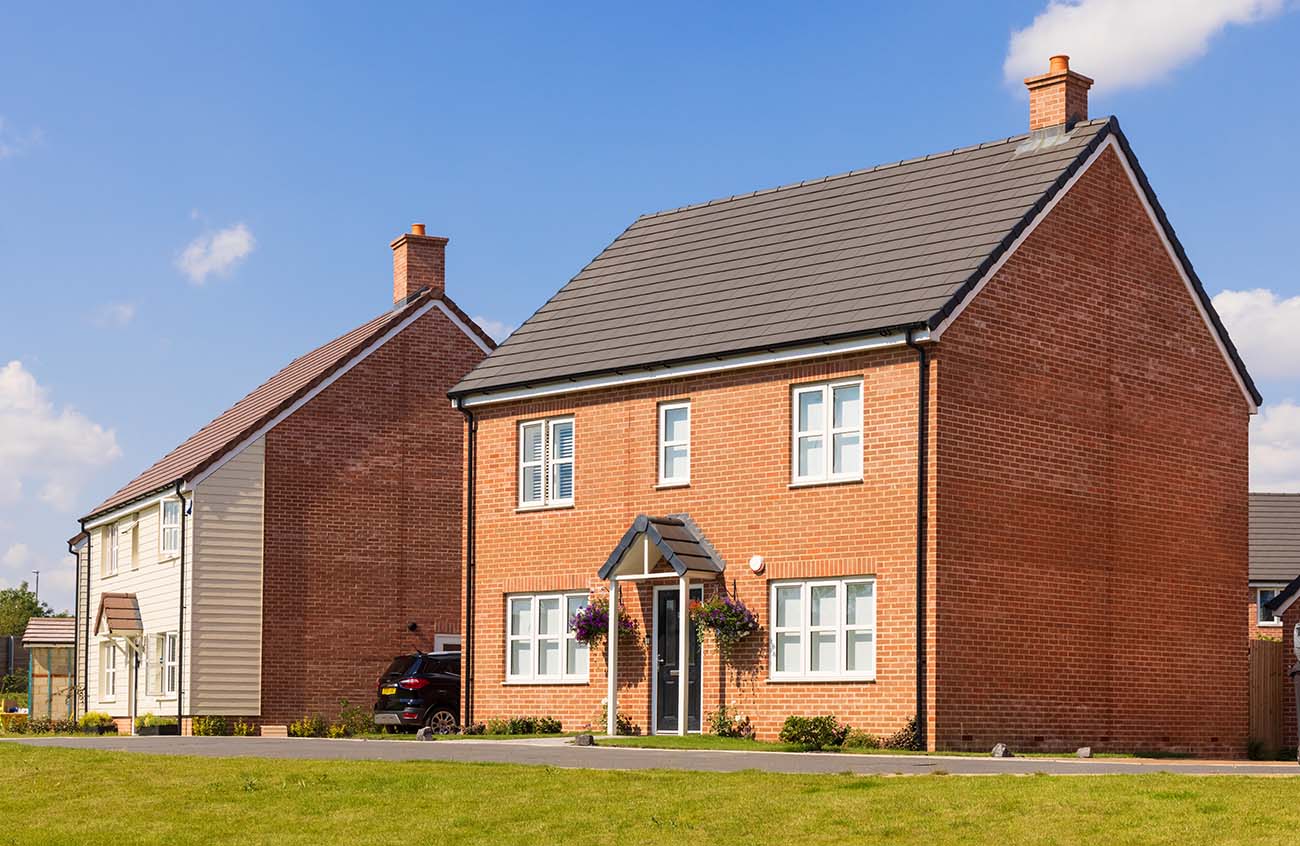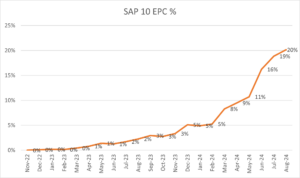Tracking the Transition to SAP 10: Only 20% of New Homes Delivered Against Latest Building Regulations
During the development and approval phase of SAP 10 applications in Spring 2022, it was confirmed that Energy Performance Certificate (EPC) lodgements could continue under SAP 2012 for dwellings assessed under the previous version of Building Regulations.
Due to this, schemes are able to track how many EPCs are being produced using either SAP 2012 or SAP 10 and therefore track how many new homes are being delivered against the latest version of the Building Regulations.

The transition to SAP 10:
Design SAP 10 was approved for EPC lodgements in England, Wales and Scotland in 2022. Since its release, Elmhurst has been tracking the usage of SAP versions in generating EPCs.
The below graph shows the ratio of EPCs produced via SAP 10 from November 2022 to August 2024:

The above graph highlights that, two years after the commencement of EPC lodgements from Design SAP 10, only 20% of new homes are being delivered against the latest version of Building Regulations in England, Wales and Scotland.
Why do new homes continue to be built to older regulations?
Each time there is a revision to the Building Regulations, a set of ‘transitional arrangements’ are introduced to ensure a smooth transition. These provisions allow some building works to be built in accordance with previous standards for a specified period. In England and Wales, these provisions are summarised as follows:
- Homes already under construction prior to the commencement of Part L 2021/2022 can continue under Part L 2013/2014 and SAP 2012.
- Homes subject to a Building Regulations application prior to commencement of Part L 2021/2022 had one year from implementation of the latest standards to commence construction to continue under Part L 2013/2014 and SAP 2012. If construction was not commenced during this period the homes must be assessed against the latest regulations.
| Table 2: Phase-in assumptions | |||||
| 2020 | 2021 | 2022 | 2023 | 2024 Onwards | |
| Phase in (% dwellings captured by Part L and F 2020) | 20% | 50% | 75% | 95% | 100% |
*Source: MHCLG
As the table highlights, it was expected that two years after the implementation of the latest version of Part L, 75% of new homes would be constructed to these standards. This now seems overly optimistic, underestimating how many builders would take advantage of the transitional arrangements.
Impact on OCDEAs:
As the number of SAP 10 EPCs increases, so does the impact of the increased evidence requirements. SAP 10 introduces a number of new data fields that must be included in documentation in order to verify the ‘as built’ assessment in order to complete an EPC. These data fields include:
- Presence of gas/electric smart meters
- Lighting Power (W) and Efficacy (l/W)
- Shower types and flow rates
- Presence of export capable meter, diverter and/or battery storage for Photovoltaic panels
Assessors will potentially have their own sign off documents that need to be updated to include these new data fields. Alternatively, the Dwelling Sign Off report, available in Design SAP 10, covers all new SAP 10 fields and can be signed by the client to confirm these items.
What does this mean for the Future Homes Standard?
In the most recent consultation for the Future Homes Standard, there were no changes proposed to the transitional arrangements that were applied for Part L 2021. In addition, there was a further projection of how many homes would be built to the standard in the years following its implementation. This is shown in the below table:
| Table 1: Phase-in assumptions (% of works captured by 2025 requirements) | |||||
| 2026 | 2027 | 2028 | 2029 | 2030 Onwards | |
| New domestic | 0% | 50% | 95% | 100% | 100% |
*Source: Future Homes Standard: Consultation-Stage Impact Assessment
Assuming the Future Homes Standard is introduced in 2025, it is expected that we would not see any homes built to these standards until 2027. However, based on the analysis of the number of homes currently built to Part L 2021, this prediction may also prove to be optimistic.
Further Resources:
Future Homes Standard: Consultation-Stage Impact Assessment: https://assets.publishing.service.gov.uk/media/65cc90e139a8a7000f60d508/Future_Homes_Standard_consultation_stage_impact_assessment.pdf
Approved Documents: https://www.gov.uk/government/collections/approved-documents
